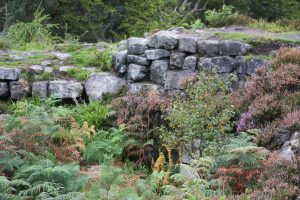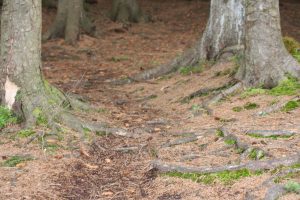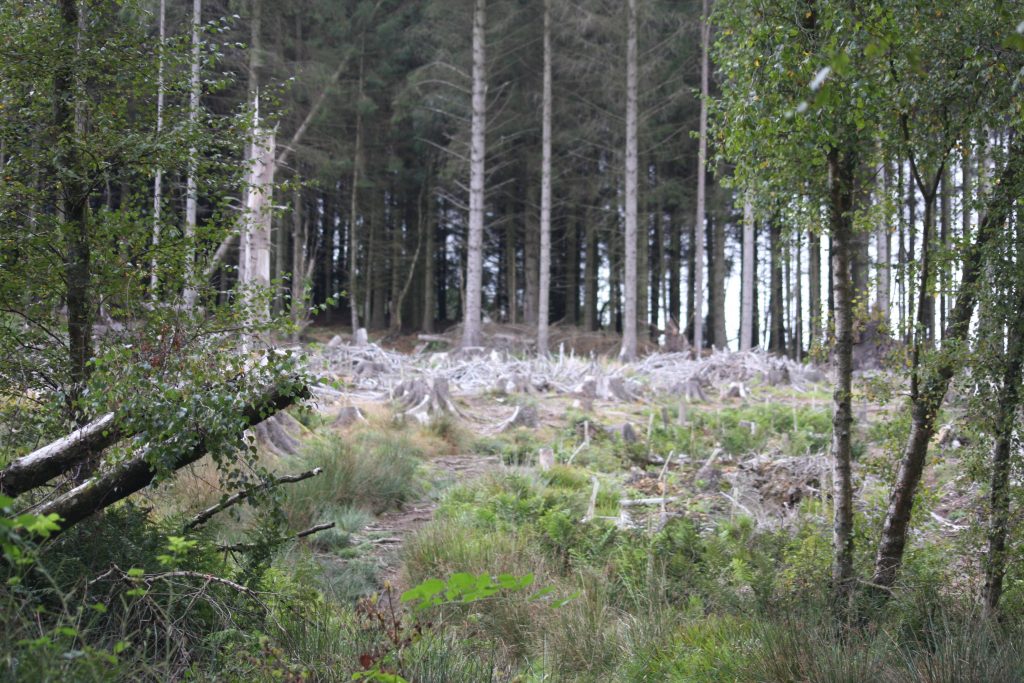
Brochs are tall stone towers, double walled, with viewing galleries. They are almost always situated in Scotland, mostly in the north and on the islands, and dating from the Iron Age. The most famous one is on Mousa. This one is the southernmost, and the closest to us, the Tappoch Broch at Torwood near Falkirk. It is pre-Roman, and excavations in 2014 showed the existence of an earlier hill-fort, and occupation in Neolithic times.
There isn’t much left of it now, just overgrown walls, a staircase

a bit of the gallery wall you can walk on to look out over the countryside, the doorway which I featured last week, and a fireplace, which I assumed had been improvised by campers, but which is actually an original structure

It retains its ancient atmosphere, but it is clearly well used by dog walkers and families, and well cared for. The path from the road sets the scene,

up through a forestry planting that has been partially harvested and cleared. Replanting has been carried out with mixed deciduous trees, oak and hazel and hawthorn, and wild trees, baby birch and seedling fir, are already making their presence felt.

Since lockdown, we have become more conscious of our need for contact with nature, of the impact wilder places can have on our well-being and self-understanding. One of the strands of my reading (which seemed fairly random and disorganised at the time, but which is settling into useful patterns of understanding now) has been the magical, shamanic, witchy kind of thinking that has crept into writing, not just from the romantic lawless outsider writers, but from some heavy-duty, politically engaged academics, which provides a very different perspective on what used to be dismissed as superstition and fantasy. I’m looking at books like Seán Hewitt’s Tongues of Fire, Rebecca Tamás’ Witch, Jacob Polly’s Jackself and Seamus Heaney’s translation of Sweeney Astray, and thinking some more about Kathleen Jamie’s famous ‘lone enraptured male’ article. I think we are looking at the emergence of a new take on nature writing, in which the environment is going to be the ground of all our moral, psychological and political thinking. You wouldn’t think a single walk on a sunny afternoon would do all that!